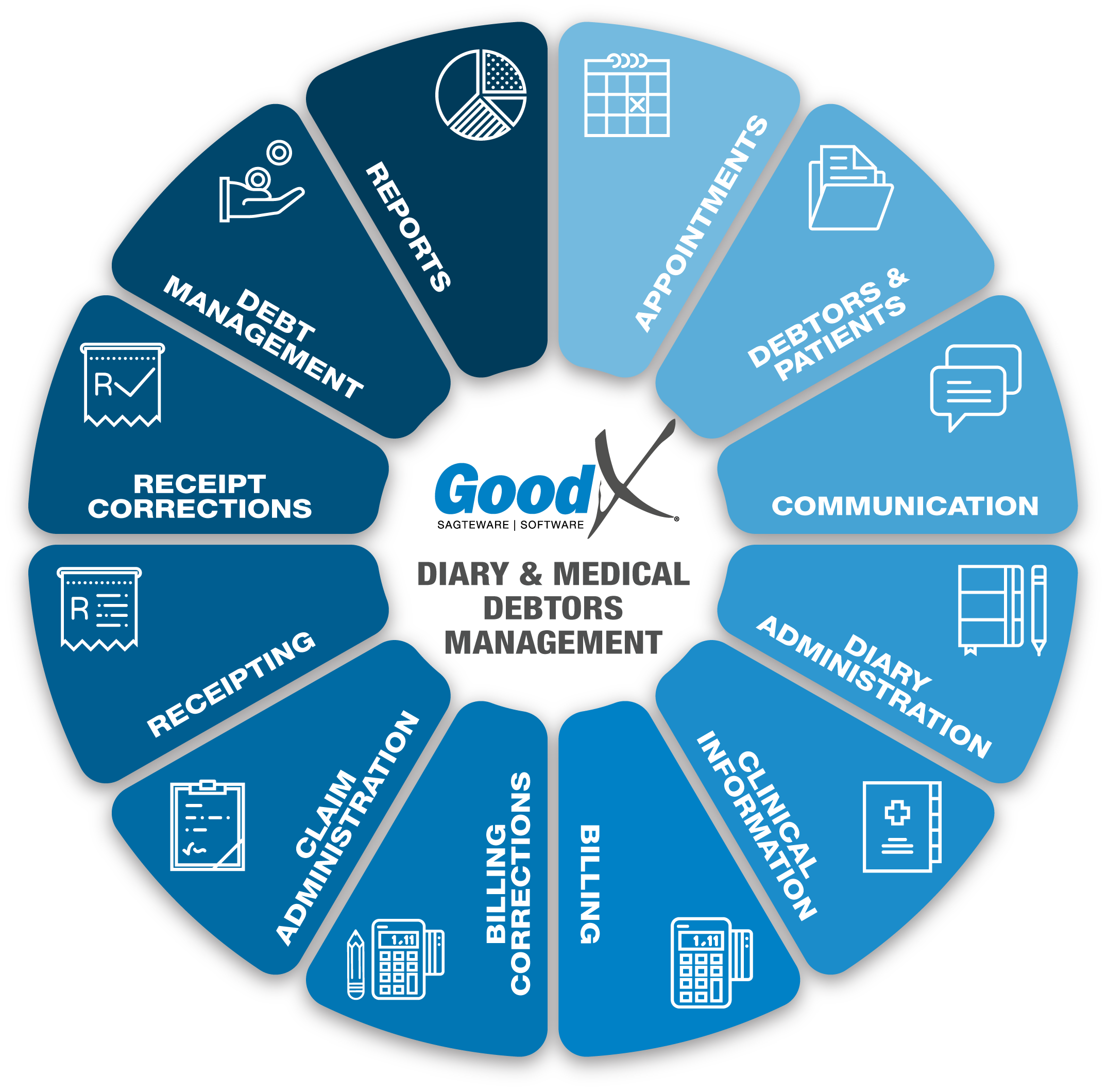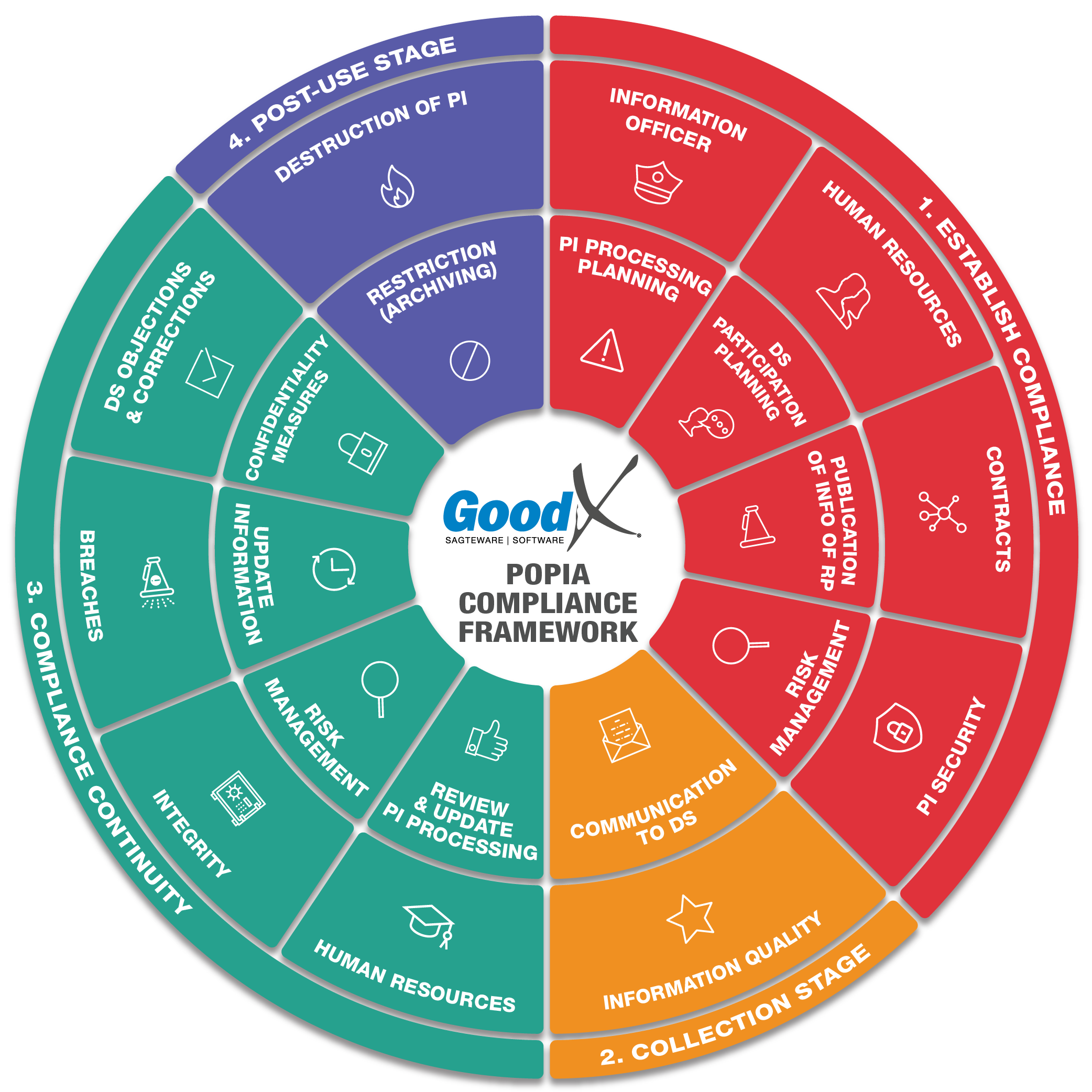Best Practice Guidelines: Healthcare Practice Management & POPIA Compliance Framework
Best Practice Guidelines: Healthcare Practice Management
&
POPIA Compliance Framework


Copyright © 2021 GoodX Software. All rights reserved.
GoodX online Learning Centre
learning.goodx.co.za
14. Debt Management: Roles, Purpose & Summary of Phases
14.1. Phase 1: Business Process Design
During the Business Process Design Phase the practice has to decide how the collection process will work. The following has to be taken into account:
- Journal design
- The collection cycles
- The configuration of the software.
The owner or practice manager must make the necessary decisions in conjunction with the relevant personnel, like the Credit Controller and Bookkeeper, before the software configuration can be done.
1. Journal Design
It is important to make the following decisions about journal entries:
- When should journals be created and posted?
- How will the journals be pre-configured to minimise user errors?
- Who may create and post journal entries?
Journals are used for the following purposes:
- Small balance write-off journals, for example, amounts outstanding that are less than R20.00.
- Settlement discount journals, for example, giving a patient a R200.00 discount for settling the account early.
- Bad debt write-off journals are outstanding amounts that are not collectable from patients.
- Bad debt recovered journals for amounts that are recovered through an external collection process.
- Hand over journals for when accounts are handed over to external debt collectors.
- Interest journals.
It is advisable that small balances and bad debt is regularly written off so that attention can be focussed on the collection of large and collectable outstanding accounts. Journals should be completed before the debt collection process starts.
Take note: Journal entries may not be used to correct billing and receipting errors. Your reporting will be incorrect as journals post to expense ledger accounts and won’t correct your turnover or cash flow.
How can journals be pre-configured to minimise user errors?
Journal Actions are pre-configured journals that are used to minimise user mistakes on accounts. Users will not be able to manually use a plus or minus as the journal action will be set up to use the correct plus or minus for the required transaction. Journal actions are linked to the correct ledger accounts. The description is fixed. Management will decide on the configuration of the Journal Actions and users will only choose the correct action to use.
Who may create and post journal entries?
Being allowed to create and post journals should only be reserved for those who are trusted to properly fulfil this function as part of their role in the practice. All journal write-offs should be checked and authorised before they are done. This will prevent fraud and theft in the practice.
2. The Collection Cycles
The collection cycles and steps to be taken in each cycle must be designed. Collection cycles are the number of days before a certain action must take place as calculated from either the service date or the transaction date.
The following decisions must be made:
- Must the cycles calculate the starting days from the capture date or transaction date?
- Which person/persons will be responsible for each cycle?
- Which processes will be automated?
- Which payment options will be used, e.g. EFT or payment links?
- When will patients be notified of outstanding amounts not paid by their medical aids? A properly designed collection cycle will notify medical aid patients of outstanding amounts that were not paid by their medical aids so that they can settle those outstanding amounts.
- Credit controller per age OR per medical aid layout: Will the outstanding amounts be divided between the credit controllers by medical aids or per age, in other words how long the amounts are outstanding. One person can be responsible for the total outstanding book.
- Decide which SMS and email templates will be used for each stage and the wording of the final demand.
- When will outstanding accounts be handed over for debt collection and which collection agency or attorneys will be used?
An example of a collection cycle:
- 10 days outstanding - SMS must be sent
- 15 days outstanding - the second SMS must be sent
- 20 days outstanding - an email must be sent with the statement
- 25 days outstanding - phone calls must be made
- 30 days outstanding - a final phone call, SMS and email
- 30 days outstanding - a Payment Link must be sent to the debtor
- 40 days outstanding - a final demand letter
- 45 days outstanding - handover to a debt collector.
The collection cycle for medical aid claims as opposed to private patient claims can differ, depending on the operational requirements and payment cycles of the medical aids.
Examples of important steps and messages that can be used:
- Every patient should receive an account after discharge or treatment at the final billing stage of the account.
- Within the first week after every month-end, all unpaid accounts on the GoodX system needs to be printed and posted or emailed to patients.
- For all accounts 30 days and older, there should be a message on the account stating the following: “This account is now considerably overdue, urgently follow up with your medical aid. We have no alternative but to hold you responsible for the payment of this account if it is not paid in full by your Medical Aid within the next 15 days."
- For accounts where the medical aid amount is short-paid, the following message should appear on the accounts: “Your medical aid did not pay your account in full. Please settle the balance within the next 15 days."
- Payment Links must be sent to patients on day 30.
3. Configuration of software
Once the collection cycles have been designed, the configuration can be done in the software. GoodX can assist the practice to configure the software for optimal debt management. If the results are not in accordance with the policies of the practice, the collection cycles can be adjusted at any time.